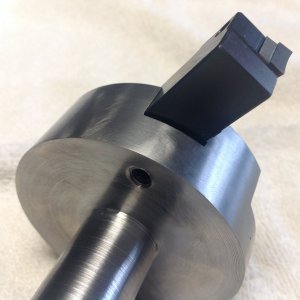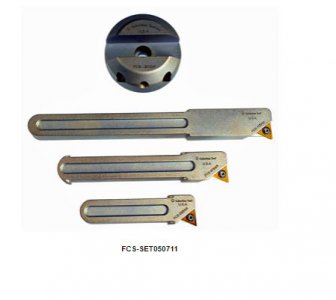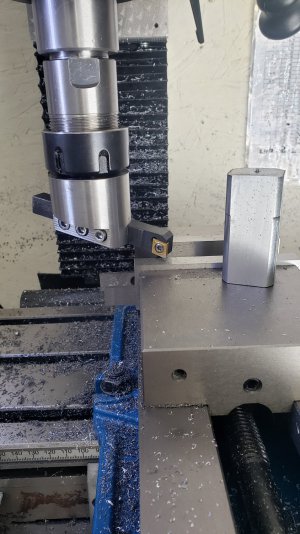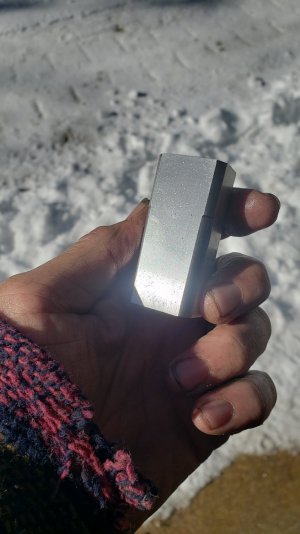The insert on the tool is definitely registered on the center line of the the cutter.
I think your first reply was perfectly reasonable.
Set screws move, so I just thought they aren't the registration surface regardless — the other face is where the tool holder registers. If you always use the same width tool, then it simply doesn't matter (just cut the opposite face exactly one tool holder width away from center and make the slot wide enough for the holder to fit). If for some reason you expected to use different width tools, then you would want the face on the cutter side of the holder to act as the registration,
not the tips of the set screws. Either way, the width of the slot (and the position of the face with the set screws) simply doesn't matter. A slot a few thou oversized or a hundred thou oversized would work the same -- it's the set screws trapping the tool against the opposite face that does the positioning.
Note that a slot for the set screws as
@aliva suggests also eliminates the worries of buggering up an unhardened tool holder with the set screws, too. You can buy dog-point set screws, but I've faced the cups off of countless set-screws and turned down a dog-point countless times. Cup points are
DESIGNED to cut into the material and raise a burr. It's another minor detail, but it's generally worth the time to at least file off the cup point and create a flat at the end of the screw if you expect to remove or reposition stuff frequently.
It bears saying, though, that like many here, I tend to over-think and over-engineer even the simplest tools like a fly cutter. Left to my own devices, I'd design it from my armchair with a tapered gib, dovetailed registration face, and special companion tool to really lock the cutter in place (right up until the point where I went into the shop and actually built something far simpler out of scrap that would likely look pretty much exactly like yours!).






